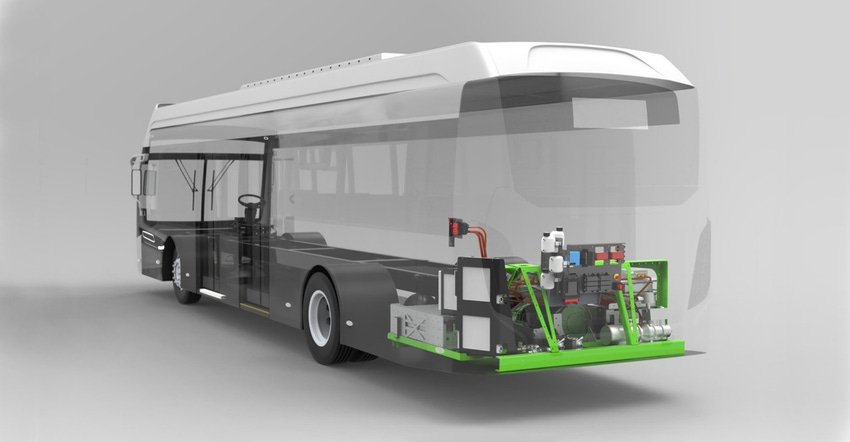Retrofit Method Electrifies Diesel Buses
UK startup Kleanbus has a technology-agnostic system to convert any bus to electric power.
September 16, 2022

The transportation industry is currently investing heavily in the electrification of automobiles for the sake of reducing carbon emissions. However, most of this investment focuses exclusively on personal vehicles—cars and trucks—and largely omits public transport such as buses and trains. To illustrate; recent studies have shown that the UK currently deploys a fleet of over 35,000 buses for public transportation—of which only three percent are electric.
Electrifying all modes of transport, both public and private, would cut down transportation-related carbon emissions more effectively than just focusing on privately owned vehicles. To address this situation, Kleanbus, a UK-based company, believes it has a solution.
Challenges with Electrifying Buses
While the industry is focused on moving from internal combustion engine (ICE) powered cars and trucks to EVs, a series of technical and economic challenges have caused other modes of transportation, such as buses, to lag behind.
From the technical side, one challenge facing the electrification of buses has to do with the driving requirements of buses as compared to personal vehicles. Buses, which continually and repeatedly drive their loops all day, tend to drive many more miles in a 24-hour span than a personal vehicle, which may only take the passengers along their standard route once per day. This is further complicated by the strict schedules buses must adhere to, limiting the opportunity to recharge throughout the day. The result is that electric buses will require larger batteries with capacities that may not be feasible on the market today.
Economically, the cost and time required to develop and deploy an entirely new class of electric buses may be prohibitive. According to Kleanbus CEO Joe Tighe, “replacing these vehicles with new electric buses is very expensive for private companies and, given fleet turnover rates, government subsidies will take many years.”
Kleanbus’ Strategy
To address these challenges, Kleanbus has come up with a method of replacing ICEs with their proprietary integration software and electric powertrain components from a network of Tier 1 suppliers to make zero-emission buses.
Kleanbus employs a custom model in which it tailors its solutions to each operator individually. The process consists of scanning the customer vehicle, removing the diesel engine and all other components related to the ICE, and installing a new e-drivetrain in its place. To ensure a successful transplant, they run through a testing process to certify the bus before returning it to the operator.
Notably, the electric motors used by Kleanbus have no permanent magnets, meaning they don’t use any rare-earth elements. Not only is this a a more environmentally friendly option, but it also limits the chance of supply-chain snags. Further, Kleanbus is also technology agnostic, giving them the ability to work with a variety of components to find the best option for each bus and e-drivetrain design.
According to Kleanbus, their method of electrification costs their customers 80% less than if they were to order a new electric bus. Additionally, the cost of electricity is lower than the cost of diesel, making the operating costs of electric buses about a third of the cost of their diesel counterparts.
Preparing for Action
Looking ahead, Kleanbus is working on prototypes with plans to launch pilot programs for a few key operators at some point during the fourth quarter of 2022. According to Tighe, creating electric busses in this way can help bring about fully electric bus fleets six years earlier than relying on the rollout of new zero-emission buses alone. Altogether, this could equate to a potential reduction of over 4.4 US tons of carbon emissions and deliver the health benefits of improved air quality that much sooner.
About the Author(s)
You May Also Like





